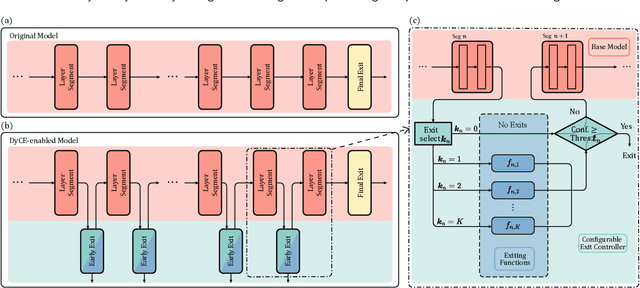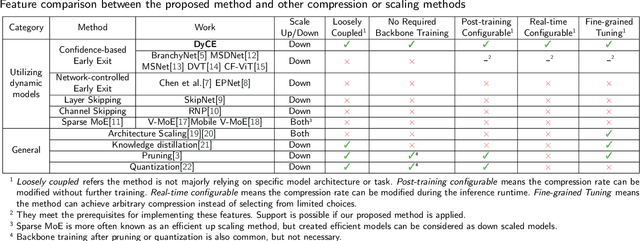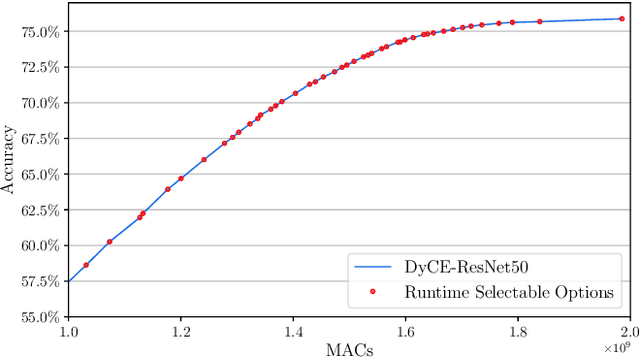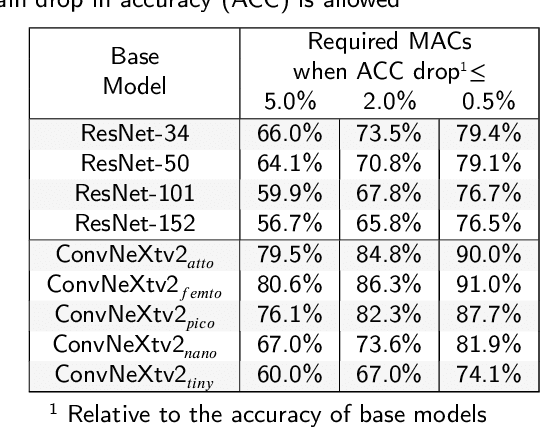DyCE: Dynamic Configurable Exiting for Deep Learning Compression and Scaling
Paper and Code
Mar 04, 2024



Modern deep learning (DL) models necessitate the employment of scaling and compression techniques for effective deployment in resource-constrained environments. Most existing techniques, such as pruning and quantization are generally static. On the other hand, dynamic compression methods, such as early exits, reduce complexity by recognizing the difficulty of input samples and allocating computation as needed. Dynamic methods, despite their superior flexibility and potential for co-existing with static methods, pose significant challenges in terms of implementation due to any changes in dynamic parts will influence subsequent processes. Moreover, most current dynamic compression designs are monolithic and tightly integrated with base models, thereby complicating the adaptation to novel base models. This paper introduces DyCE, an dynamic configurable early-exit framework that decouples design considerations from each other and from the base model. Utilizing this framework, various types and positions of exits can be organized according to predefined configurations, which can be dynamically switched in real-time to accommodate evolving performance-complexity requirements. We also propose techniques for generating optimized configurations based on any desired trade-off between performance and computational complexity. This empowers future researchers to focus on the improvement of individual exits without latent compromise of overall system performance. The efficacy of this approach is demonstrated through image classification tasks with deep CNNs. DyCE significantly reduces the computational complexity by 23.5% of ResNet152 and 25.9% of ConvNextv2-tiny on ImageNet, with accuracy reductions of less than 0.5%. Furthermore, DyCE offers advantages over existing dynamic methods in terms of real-time configuration and fine-grained performance tuning.
 Add to Chrome
Add to Chrome Add to Firefox
Add to Firefox Add to Edge
Add to Edge